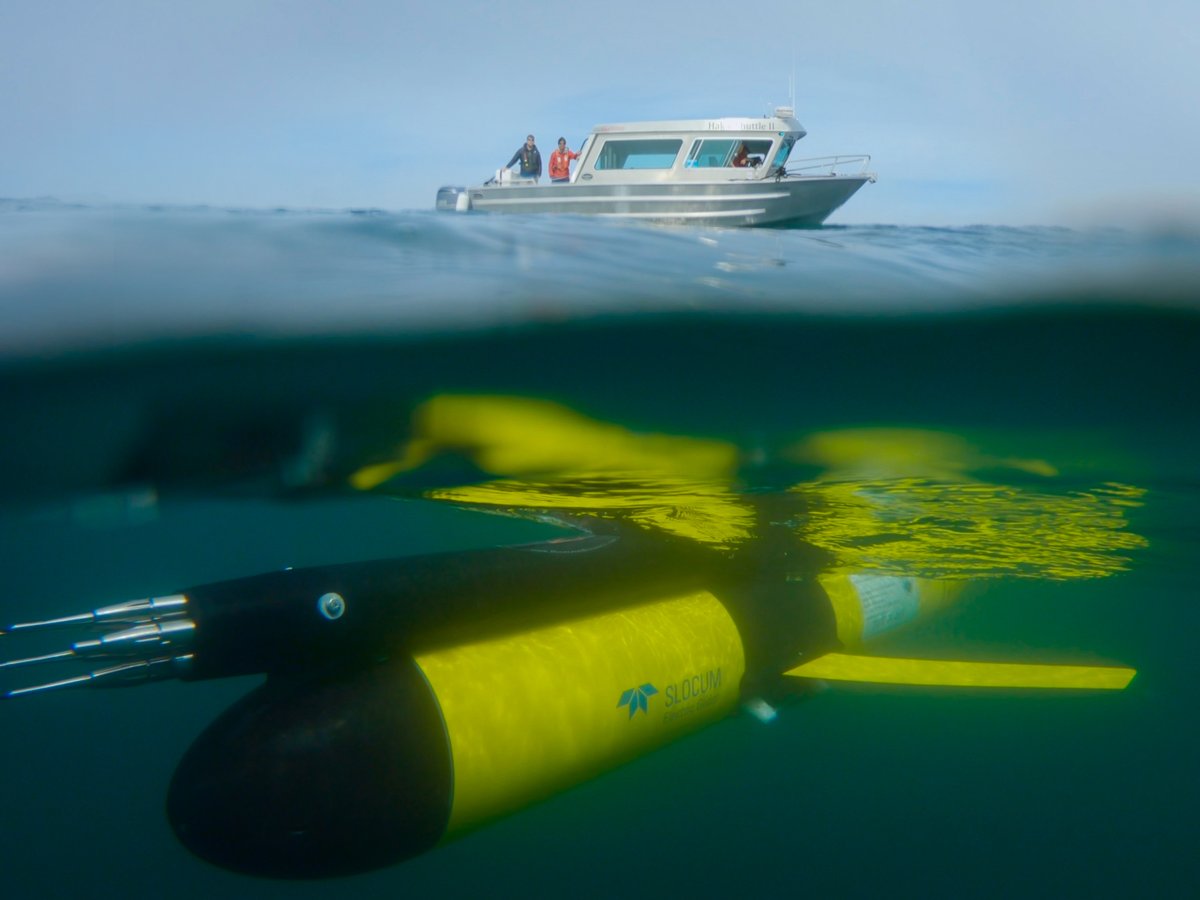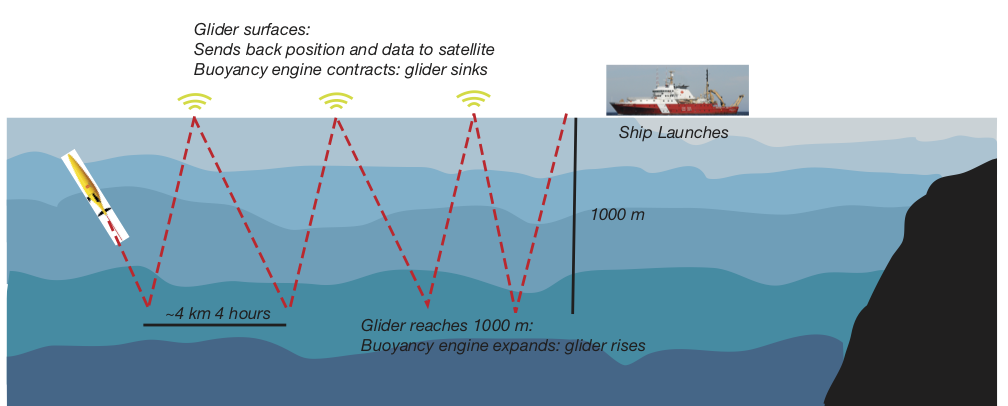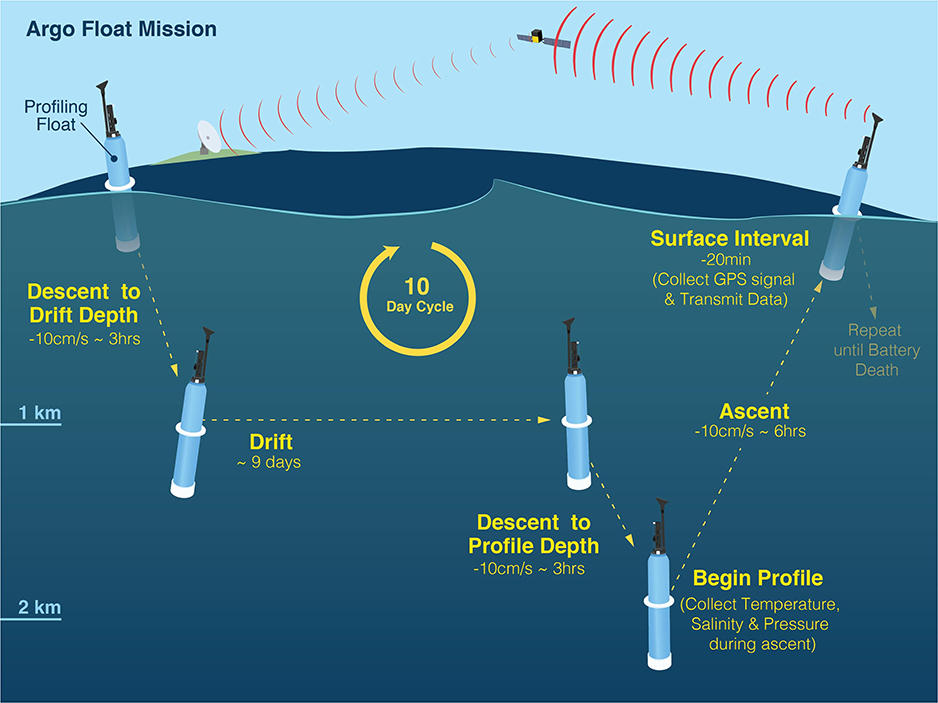Ocean Gliders:

What is an ocean glider?
Underwater ocean gliders are autonomous vehicles that use a buoyancy engine to make themselves lighter or heavier than the seawater around them, causing them to float or sink. They have hydrodynamic wings that turn some of this lift to forward thrust, allowing them to move through the water at 20-30 km/day. Every 4-8 hours they surface and call home, communicating over satellite to share their GPS position and a subset of their data. They also receive commands for where to go next and how to change their sampling. Our ocean gliders have sensors to measure ocean temperature and salinity, dissolved oxygen, chlorophyll, dissolved organic matter, turbidity, and even microstructure turbulence.

Meet the Fleet
Biogeochemical Argo Floats

About biogeochemical Argo floats
The goal of Biogeochemical-Argo is to develop a global network of Argo profiling floats with biogeochemical sensors onboard. Argo is an international program with thousands of profiling floats measuring water properties globally. Each float is an autonomous instrument that drifts with the ocean currents and moves up and down through the ocean, returning to the surface to communicate data via satellite. Argo floats measure temperature and salinity, and biogeochemical floats also measure additional properties that describe the biology and chemistry of the ocean. C-PROOF contributes instruments to core Argo floats.
C-PROOF Argo floats
| 4902549 | 4902550 | 4902551 | 4902552 |
| 4902553 | 4902554 | 4902555 | 4902583 |
| 4902584 | 4902585 | 4902586 | 4902586 |
| 4902587 | 4902588 | 4902589 | 4902612 |
| 4902613 | 4902616 |